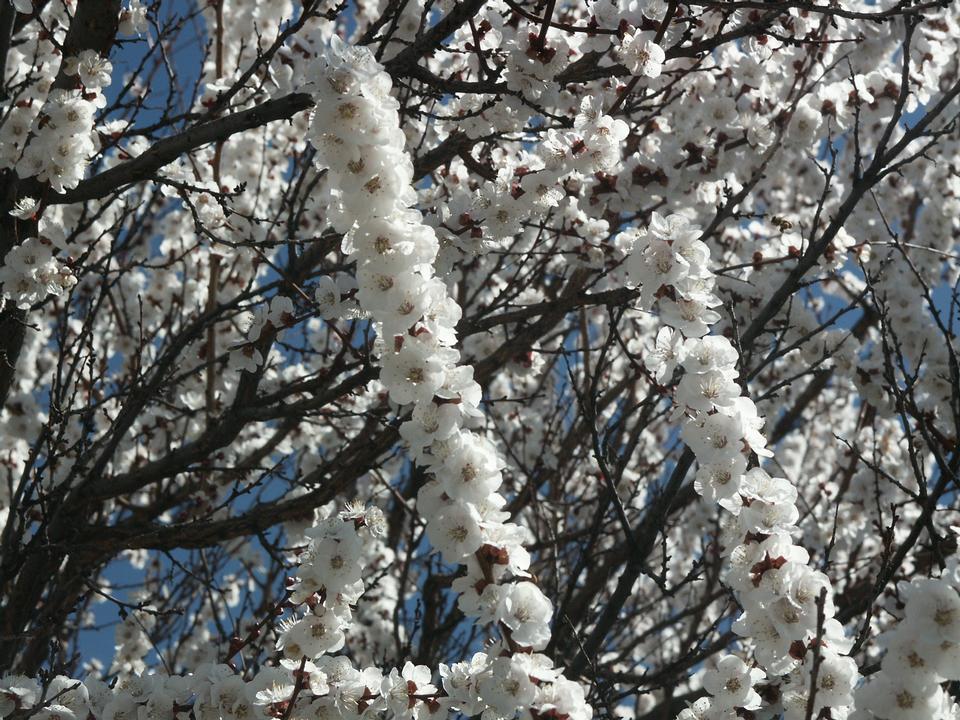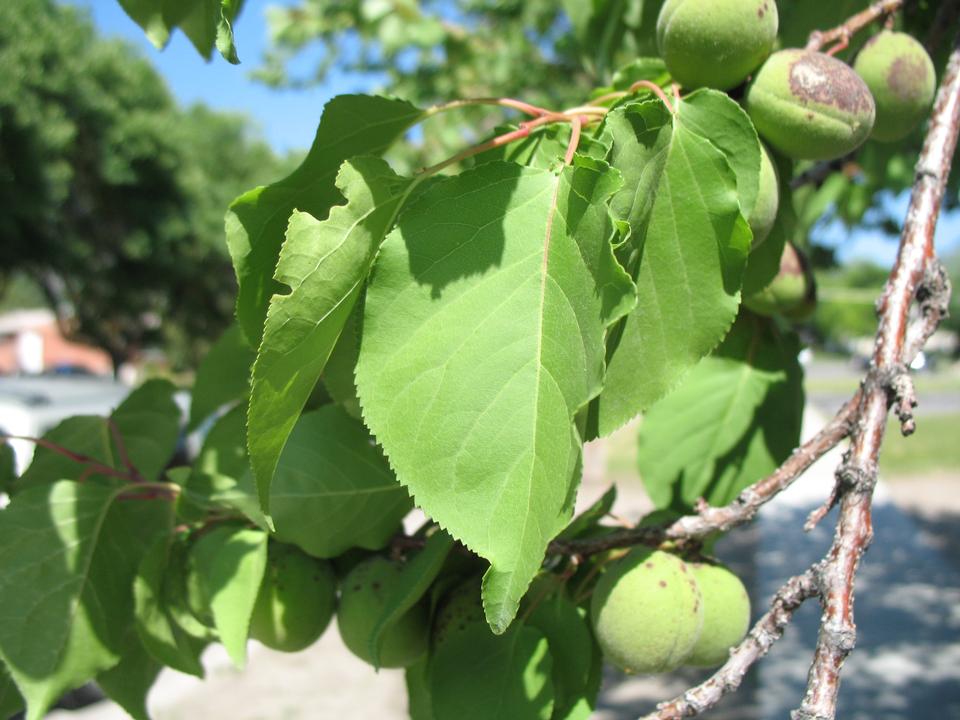Apricot
Prunus armeniaca
Rosaceae - Rose
Description
Leaves: Simple; alternate; ovate leaves broader than in peach; deciduous.
Twigs/buds: Twigs reddish brown, with prominent lenticels. Buds scaly, red-brown like twig.
Flowers/fruit: Flowers perfect, pink to white, 1" wide. Fruit similar to peach but smaller and nearly glabrous with a smooth pit.
Bark: Dark brown to reddish-brown to black.
Wood: Hard and durable; used for agricultural implements or fuel.
General: Native to Asia and long-cultivated. Shade intolerant. Fruit and/or plant part can be nuisances; use fruitless varieties if possible. Sucker (sprout) growth can be a problem.
Landscape Use: Generally only grown for fruit, and I have not seen that many well-kept apricots. However, Dr. Phil Allen at BYU feels that apricot makes a good specimen tree with a nice branch structure. Pests can be a problem. More cold-hardy than peach and quite drought hardy. Many cultivars. Zones 4(3?)-9.
Cultivars: Numerous varieties. 'Goldcot', 'Goldrich', 'Harcot', 'Harglow', 'Hargrand', 'Harlayne', 'Haroblush', 'Harogem', 'Harojoy', 'Harostar', 'Harval', 'Veecot', 'Velvaglo', 'Vivagold'.
Characteristics
General
| Family | Rosaceae - Rose |
|---|---|
| Cultivar Availability | Yes |
| Hardiness Zone | 4-9 |
| Type | Broadleaf |
| Utah Native | No |
Growth
| Growth Rate | Medium |
|---|---|
| Mature Height | Medium |
| Longevity | Medium |
| Is Good Under Power Lines | No |
| Crown Shapes | Vase |
Ornamental
| Bark | No |
|---|---|
| Fall Color | No |
| Flowers | Yes |
| Foliage | No |
| Fruit | Yes |
Tolerance
| Shade | Low |
|---|---|
| Salt | High |
| Drought | Medium |
| Poor Drainage | Low |
| Alkalinity | Medium |
| Transplanting | Medium |








